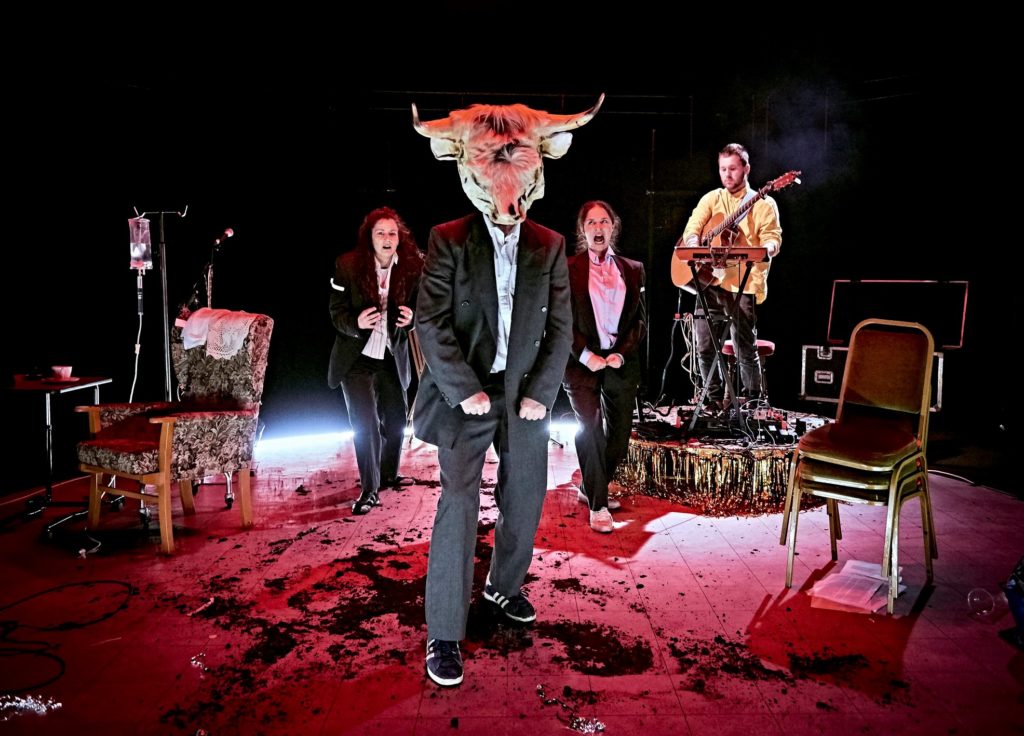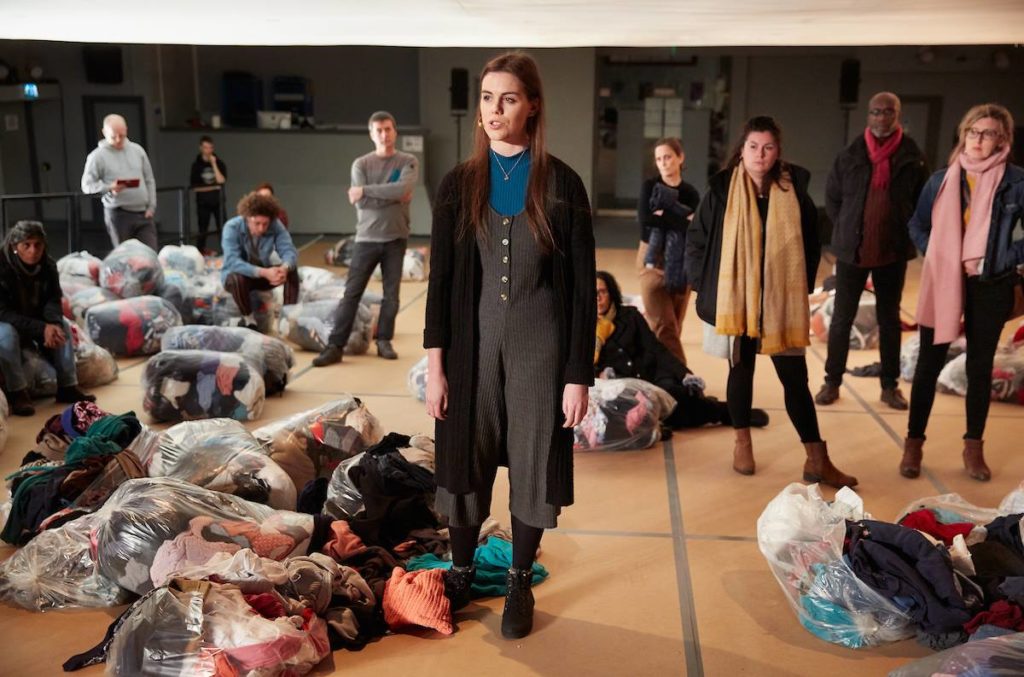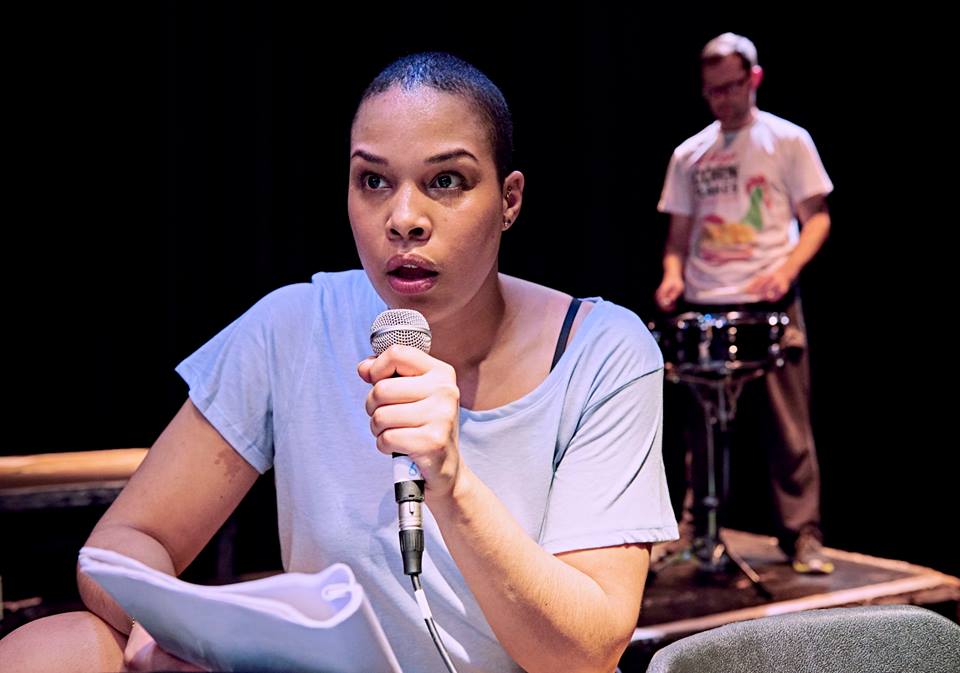
 (2.5 / 5)
(2.5 / 5)
‘If I Can Shoot Rabbits, I Can Shoot Fascists,’ is the strapline of the first play by PowderHouse in association with the Sherman Theatre and Theatr Genedlaethol Cymru. It comes from the Manic Street Preachers’ song ‘If You Tolerate This Your Children Will Be Next,’
This in turn is inspired by the involvement of Welsh volunteers in the Spanish Civil War. The play Shooting Rabbits seeks to evoke the experience of a young Welshman travelling to Spain to fight against fascism in the 1930s while seemingly hinting at a similarity between fighting the authoritarian oppressor in Spain and the strife of Irish, Welsh, and Basque nationalism, given a new life by Brexit. Such an unwieldy subject matter could only fail on stage, especially when it is conveyed through a stream of consciousness dramaturgy that leaves the audience confused. Nonetheless the play succeeds in capturing the ambiguity of any proclamation in the name of ‘the people.’

Shooting Rabbits co-directed by Jac Ifan Moore and Chelsey Gillard begins with a Northern Irish actor auditioning for a role in Wales. The casting director asks him to do a ‘more Irish’ accent, meaning one that is from the Republic of Ireland. The director expresses sympathy with the Irish, ‘Solidarity with you,’ ‘Wales stands with you,’ ‘Your people.’ The ‘solidarity’ is borne of the alleged ‘shared struggle’ against the ‘neighbours across the borders.’ The actor, played by Neil McWilliams, launches into a tirade questioning the very premise of ‘the people.’ Who are his people? Republicans, Nationalists, the IRA, Unionists, the DUP? The reduction of the heterogeneous reality of a country to one group betrays not just an ignorant and condescending attitude, but one that delegitimises whoever does not fit the image of the country, a country that is always an ideal, never a complex reality. This is nowhere more evident than in the impassioned and seductive speech of Francisco Franco performed by Alejandra Barcelar Pereira in Spanish. It appeals to the defence of the country and faith in the country, but it is a country that repudiates all those who do not abide by the script.

The appeal to ‘the people’ is a dangerous weapon that is wielded against the very people it professes to protect. ‘The people’ erases people as a heterogeneous empirical reality, disregards and delegitimises theirs diversity, their different perspectives, lifestyles, values, customs, and, above all, their overlapping identities. This is what the European Union aims to promote: unity in diversity. That is why Catalan, Basque, Scottish, and Welsh nationalist movements, to name a few, are often supportive of the EU. Thus, the EU does indeed undermine the nation state, conceived as a unitary and homogeneous entity, by giving voice to communities inside nations and across them. Today, the EU is embattled, but the crisis is not a battle between fascism and liberal democracy; rather it is more the result of established structures and politics being out of step with contemporary society and economics. That is why it is risky to draw any comparisons between today’s crises and the 1930s, as Shooting Rabbits seeks to do.

Shooting Rabbits is at its best when it exposes the naivete of the romantic ideal of fighting against fascism and of claiming to represent a ‘people.’ The young Welshman in 1930s Spain does not know what to do and begs to be told what to do. In front of the horror of the civil war, the volunteers of the International Brigade repeat that it was not meant to be this way. The play makes fun of political divisions and polarisations that create enemies. It is evocative and exhilarating. It is acted beautifully in Spanish, Basque, Welsh, and English by Alejandra Barcelar Pereira, Gwenllian Higginson, and Neil McWilliams, and it is supported by the music performed live by Sam Humphreys. It is also a missed opportunity. Shooting Rabbits flounders due to a superficial historical analysis and a stream of consciousness structure that disorients the spectator instead of bringing clarity.






 (2 / 5)
(2 / 5)
 (4 / 5)
(4 / 5)








 (3 / 5)
(3 / 5)




